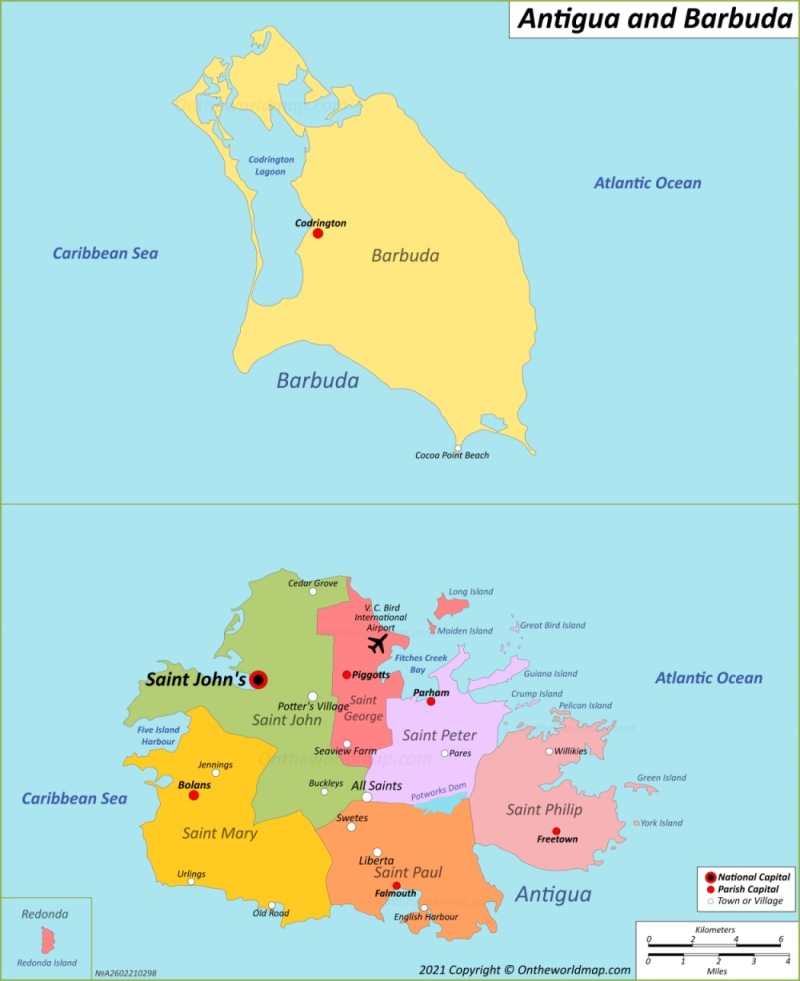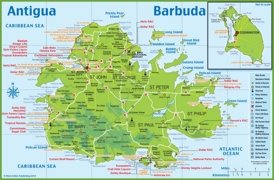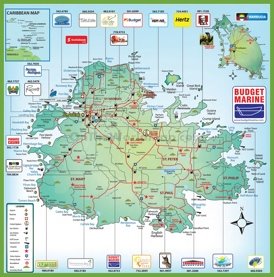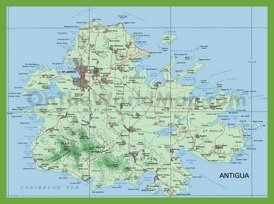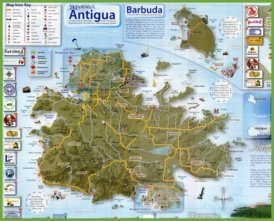Antigua and Barbuda Map
Description:
This map shows islands, airport, parishes and dependencies, parish capitals, major cities and towns in Antigua and Barbuda.
Size: 1500x1839px / 506 Kb
Author: Ontheworldmap.com
You may download, print or use the above map for educational, personal and non-commercial purposes. Attribution is required. For any website, blog, scientific research or e-book, you must place a hyperlink (to this page) with an attribution next to the image used.
Online Map of Antigua and Barbuda
About Antigua and Barbuda
Antigua and Barbuda is a sovereign state in the eastern Caribbean consisting of two main islands, Antigua and Barbuda, and several smaller islands. The State is located between the Caribbean Sea and the Atlantic Ocean, part of the Lesser Antilles. It shares no land borders with any country, but is located southeast of Puerto Rico and north of Guadeloupe.
St. John's is the capital and largest city, located on the northwest coast of Antigua, serves as the country's economic and administrative center. Other significant cities include All Saints and Liberta on Antigua and Codrington on Barbuda.
The economy of Antigua and Barbuda is largely dependent on tourism, which accounts for a significant portion of the country's GDP. The islands attract visitors with picturesque beaches, clear waters and a favorable climate. Highlights include Nelson's Dockyard in English Harbor, a UNESCO World Heritage Site, and the annual Antigua Sailing Week, a notable event on the yachting calendar. Barbuda is home to a frigate bird sanctuary and unique pink sand beaches, increasing its appeal to ecotourists.
The Facts:
Capital: St. John's.
Area: 170 sq mi (440 sq km).
Population: ~ 101,000.
Official language: English.
Currency: East Caribbean dollar (XCD).
Cities and Towns: St. John's, All Saints, Liberta, Potter's Village, Bolans, Swetes, Seaview Farm, Piggotts, Codrington, Parham.
Parishes and dependencies of Antigua and Barbuda: Saint George, Saint John, Saint Mary, Saint Paul, Saint Peter, Saint Philip, Barbuda, Redonda.
Driving side: left.
Calling code: +1-268.
Internet TLD: .ag.
Time zone: UTC-4 (AST).
Website: ab.gov.ag.
Google Map of Antigua and Barbuda
Geography of Antigua and Barbuda
Antigua and Barbuda, located in the eastern Caribbean, consists of two main islands and several smaller islands. Antigua has an area of about 281 square kilometers (108 sq mi) and the topography is mostly low-lying, with some volcanic areas. Barbuda, covering an area of about 161 square kilometers (62 sq mi), is flat and composed of coral limestone.
The islands have a tropical maritime climate characterized by year-round warm temperatures. The dry season lasts from January to April and the wet season from May to November. Antigua is divided into several parishes, including St. John's, St. Mary's, and St. George, each with its own geographical characteristics. Barbuda remains a less populated and developed island with Codrington as the main population center.
Brief History of Antigua and Barbuda
Christopher Columbus discovered Antigua in 1493 on his second voyage. European powers, including Spain and France, were initially interested, but in 1632 the British established a permanent colony here. The islands remained under British control for several centuries, becoming a key naval and sugar production center. In 1958, Antigua and Barbuda became part of the West Indies Federation, which dissolved in 1962.
In 1967, the islands were granted associate state status, which gave them the right to internal self-government. On November 1, 1981 Antigua and Barbuda gained full independence, forming a constitutional monarchy with the British monarch as head of state. Since then, the country has maintained a stable parliamentary democracy and has focused on economic development and tourism.

